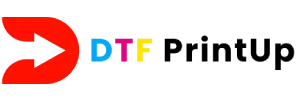DTF Printing Techniques have revolutionized the textile printing landscape, offering cutting-edge solutions for businesses looking to produce high-quality designs on fabric. This innovative method facilitates vibrant prints on a variety of materials, making it ideal for both small-scale projects and large production runs. As you delve into the world of DTF, you’ll uncover essential practices such as the gang sheet technique, which maximizes efficiency and minimizes waste. Moreover, advancements in DTF printing equipment, like the compact A3 DTF printer, are empowering startups and entrepreneurs to access print-on-demand services with greater ease. Understanding DTF printing techniques is not just about adopting new technology; it’s about harnessing the potential of custom textile printing to enhance your creative offerings and business growth.
Direct-to-Film printing, often referred to as DTF printing, encompasses a range of innovative methods designed to produce stunning fabric prints. This evolving technology provides an opportunity for businesses to engage in custom fabric decoration while utilizing efficient production techniques, including the popular gang sheet approach. With the introduction of affordable DTF printing equipment, like the compact A3 DTF printer, budding entrepreneurs can dive into print-on-demand services without significant financial hurdles. These advancements cater to a burgeoning market increasingly focused on personalized textile creations. By exploring DTF-oriented printing strategies, you can elevate your capabilities in delivering unique, high-quality designs.
Understanding the Gang Sheet Technique in DTF Printing
The gang sheet technique is a revolutionary approach within DTF printing that allows multiple designs to be printed on a single sheet. This method not only streamlines the printing process but also maximizes material usage, making it a cost-effective solution for both small and large printing operations. By organizing various designs on one sheet, printing companies can significantly cut down on waste, leading to more sustainable business practices in the long run. This technique is particularly advantageous for custom textile printing projects where diverse designs are commissioned in lower quantities.
Moreover, the gang sheet technique enhances turnaround times, enabling businesses to meet tight deadlines without compromising on quality. With the ability to print several designs in one go, companies benefit from faster production rates which can help in catering to last-minute orders or rapid shifts in market demand. For entrepreneurs and creatives alike, mastering this technique is essential for remaining competitive in the bustling world of print-on-demand services.
The Rise of Compact A3 DTF Printers
The compact A3 DTF printer has emerged as a game-changer for the printing industry, especially for small businesses and freelancers. These printers are designed to be more accessible without sacrificing the quality and capabilities expected of larger printing machines. With their compact size, they can fit in smaller workspaces while still providing high-resolution prints needed for custom textile applications. This means that businesses can keep their overhead low while still being able to offer clients a range of customizable products.
Additionally, the affordability of compact A3 DTF printers has opened doors for many aspiring entrepreneurs who might have previously felt daunted by the costs associated with setting up a printing operation. Unlike traditional printing setups that require hefty investments in equipment, these compact options allow for a Print-on-Demand service model without the significant financial risks. Therefore, for anyone looking to start their journey in textile printing, investing in a compact A3 DTF printer is a strategic move to consider.
Shaping Print-on-Demand Services with DTF
The integration of DTF technology within the print-on-demand market has transformed the way consumers interact with textile printing. With the ability to produce high-quality designs swiftly and efficiently, businesses can now offer personalized products that cater to individual tastes. This has propelled the popularity of print-on-demand services, as more clients are captivated by the idea of having unique, one-of-a-kind pieces without the wait associated with traditional manufacturing methods.
Furthermore, DTF printing accommodates a diverse array of materials, including cotton, polyester, and blends, allowing businesses to expand their product offerings beyond simple T-shirts. From hoodies and caps to home textiles like cushion covers, the versatility of DTF printing makes it a valuable asset in the realm of custom textile printing. As demand for personalized items grows, staying ahead with advanced DTF printing techniques can significantly benefit print-on-demand businesses.
Essential Equipment for Mastering DTF Printing
To effectively harness the full potential of DTF printing techniques, it is crucial to invest in the right DTF printing equipment. This includes not only the printer itself but also essential supplies such as films, adhesives, and transfer powders needed to produce high-quality prints. By understanding the functionality of each component, businesses can create a streamlined workflow that enhances productivity and ensures consistent results.
Additionally, staying updated with the latest advancements in DTF printing technology is vital. Regularly upgrading or maintaining equipment helps in consistently meeting customer expectations in quality and timeliness. Businesses must also consider training their staff in the operational aspects of this equipment, as proper handling can lead to fewer errors and improved output quality, ultimately contributing to a more successful printing venture.
Maximizing Efficiency with DTF Printing Techniques
Efficiency is a cornerstone of successful DTF printing operations. By understanding and implementing various DTF printing techniques, business owners can significantly enhance their production capabilities. Techniques such as the gang sheet method, combined with effective resource management, can lead to increased output while minimizing waste.
Moreover, optimizing workflow processes and maintaining a well-organized printing environment can further boost efficiency. By analyzing each stage of production, from design to print, businesses can identify bottlenecks and streamline operations. This not only allows for faster turnaround times but also enhances overall customer satisfaction as businesses can deliver high-quality, customized products more quickly.
Future Trends in DTF Printing
As the DTF printing industry continues to evolve, several trends are beginning to shape its future. One of the most significant trends is the increasing demand for personalized products, driven by consumer preference for unique and custom designs. This trend is particularly prominent within the print-on-demand sector, where businesses are now required to adapt quickly to changing consumer needs while maintaining quality.
Moreover, technological advancements are set to revolutionize the efficiency and capabilities of DTF printing equipment. Innovations in printer technology will likely include faster print speeds, higher resolutions, and improved compatibility with a wider range of fabrics. As these trends unfold, staying informed and adaptable will be key for businesses aiming to leverage DTF printing techniques effectively in a competitive market.
Frequently Asked Questions
What is the gang sheet technique in DTF printing techniques?
The gang sheet technique in DTF printing involves printing multiple designs on a single sheet simultaneously. This approach increases efficiency by maximizing the number of prints per run and minimizing material waste, making it particularly advantageous for businesses aiming to scale operations without incurring high costs.
How does a compact A3 DTF printer enhance DTF printing techniques?
A compact A3 DTF printer advances DTF printing techniques by providing an affordable and efficient option for small businesses and freelancers. This equipment allows users to create high-quality prints on demand, catering to the growing demand for personalized custom textile printing without substantial financial investment.
What are the benefits of using DTF printing equipment for print-on-demand services?
DTF printing equipment is ideally suited for print-on-demand services as it enables businesses to produce customized items quickly and cost-effectively. This printing technique accommodates small batch runs, reducing overhead costs and allowing for rapid response to market trends and customer preferences.
How can businesses leverage custom textile printing with DTF printing techniques?
Businesses can leverage custom textile printing using DTF printing techniques by embracing innovative methods such as the gang sheet technique and utilizing compact A3 DTF printers. These strategies allow for efficient production of unique designs, helping companies meet consumer demands for customized products while managing costs effectively.
What role do emerging DTF printing techniques play in enhancing production efficiency?
Emerging DTF printing techniques, such as the use of gang sheets and compact printing equipment, play a crucial role in enhancing production efficiency. By minimizing waste and reducing printing times, these techniques enable businesses to streamline their operations and improve their competitiveness in the textile printing market.
Why is understanding DTF printing techniques essential for newcomers in the print industry?
For newcomers in the print industry, understanding DTF printing techniques is essential because it equips them with the knowledge to utilize advanced methods and equipment effectively. This understanding allows new entrants to capitalize on trends like print-on-demand services and custom textile printing, positioning their business for success in a competitive landscape.
| Key Aspect | Description |
|---|---|
| DTF Printing Techniques | Innovative methods within the DTF printing realm aimed at enhancing output quality and operational efficiency. |
| Gang Sheet Technique | A process that allows multiple designs to be printed on a single sheet, improving efficiency and reducing waste. |
| Emerging Market Equipment | Compact and affordable printers like the AM.CO.ZA compact A3 DTF printer are making DTF technology accessible to small businesses. |
| Print-On-Demand Services | The flexibility and cost-effectiveness of DTF printing technology cater to the growing demand for personalized and custom products. |
| Access and Affordability | Lower price points for equipment are enabling smaller businesses to enter the DTF market, fostering creativity and innovation. |
Summary
DTF Printing Techniques are revolutionizing the textile printing industry, providing both established companies and newcomers with the tools needed to succeed. These techniques, especially the gang sheet method, enhance operational efficiency and reduce resource waste. With the rise of affordable compact printers, even small businesses can now access high-quality printing capabilities. As demand for personalized products continues to grow, understanding these innovative methods becomes crucial for any printing venture. Overall, the future of DTF printing looks promising as barriers to entry diminish, allowing for innovation and diversity in the market.



